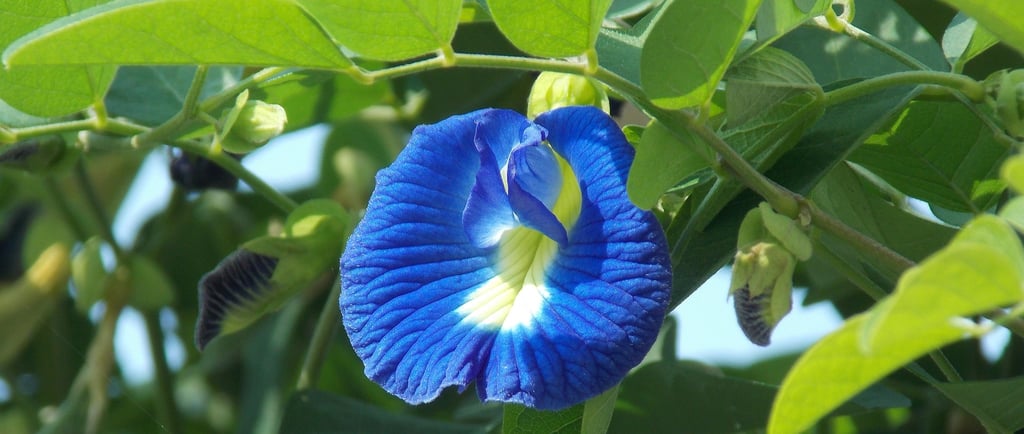🌺Petals, Pigments and Potions 🧪Nature’s pH Artists 🌿🧫🍋
🌸 A follow-up story that connects The Flower chapter in the Biology Album with Chapter Examining the Nature of the Elements in the Geography Album—a chapter bubbling with hands-on experiments! 🧪✨ This colorful exploration invites children to discover the Butterfly Pea Flower, whose vibrant blue petals are filled with anthocyanins—special plant pigments that act as natural pH indicators. 🍋💙 As a follow-up, children brew their own “plant potions” and test them with vinegar, milk, or baking soda, watching in awe as their mixtures shift colors—revealing whether each liquid is acidic, neutral, or alkaline. 🌈🌿 This sensory-rich experience bridges botany and chemistry, showing children how to estimate the pH of everyday liquids just by observing their color transformations. It opens a door to deeper exploration and joyful discovery. It leaves children wondering: 💭 What other plants are natural pH indicators hiding in plain sight?
GEOGRAPHY STORIES BIOLOGY STORIES
6/18/20252 min read


Today’s story isn’t just about a plant—it’s an invitation to become a scientist and do experiments ! 🔬🌈 Some plants doesn’t just sit pretty in the garden… it wants you to mix, stir, and explore them. Today you will make a plant potions and observe changing colors. 🧫🧪
This flower grows like a delicate vine, stretching toward the sun with bright blue petals shaped like the wings of a butterfly. That’s how it got its name: Butterfly Pea—from the shape of its bloom, not because butterflies drink it or peas grow from it! 🦋🌸
When you pick the blue petals and steep them in warm water, something amazing happens: the water turns a deep, rich blue—just like ocean waves under moonlight. 🌊☕ But that’s only the beginning. What if you add just one little drop of lemon juice? 🍋💧 Suddenly—POOF!—the blue tea transforms into purple… then pink! 💜➡️💗
But this isn’t just magic—it’s science! The Butterfly Pea Flower is a natural pH indicator. That means it’s like a little color detective. The blue petals contain special plant pigments called anthocyanins (👏 an 👏 tho 👏 cya 👏 nins)—tiny natural particles that change color when they meet something acidic (like lemon juice) or basic (like baking soda). The name anthocyanin comes from Greek. Anthos means flower, and kyanos means dark blue—so anthocyanins are literally “blue flower pigments.”
Scientists use pH indicators to discover whether a liquid is sour like lemon (acidic), plain like water (neutral), or slippery like soapy water (alkaline)—it’s like reading a colorful secret code with your eyes, without having to taste a single drop! 🌈🔍
👑 This flower is a royal guest in many cultures. 🎨 Artists use it to dye cloth and paper. In Thailand, it’s called Dok Anchan and people harvest the blossoms and use the petals to color rice and sweets. 💠🍚 In Malaysia, it’s stirred into rice to make nasi kerabu, turning it a beautiful shade of blue. Some believed it was a gift from nature to help people think clearly and feel calm. That’s why in many places, people drink Butterfly Pea Tea when they need to concentrate or relax. ☕🧘 Some even call it the flower of the mind 🌿🧠
Now it’s your turn to brew potions from plants and estimate their pH ! The butterfly pea flower hides its magic in the petals—but red cabbage keeps its color-changing secret in its leaves! 🥬✨Try making your own pH potion using red cabbage leaves!🌿 These big purple leaves are filled with anthocyanins, just like butterfly pea, but tucked inside the leaf lamina. 🌈🌱
Chop up the leaves, soak or boil them in warm water, and… ta-da! You’ve made your own purple potion! Now test what happens when you mix your plant potion with:
🫗 Vinegar
🍋 Lemon juice
🍹 Orange juice
🥛 Milk
🪥 Toothpaste mixed with water
🥄 Baking soda mixed with water
Watch carefully—what colors appear? Red, pink, purple, blue, green? 🌈 Why do they change? Each ingredient you add is either acidic, neutral, or alkaline—and the anthocyanins in your potion react like color-changing detectives! 🎨
💭 I wonder… what other plants hold color-shifting secrets inside their leaves and petals? The butterfly pea and the red cabbage are not the only natural chemist in the plant kingdom. Let’s go on a treasure hunt in the garden or in the fields to find other plants, make potions and check their pH.
With Montessori joy,
Vanina 😊

